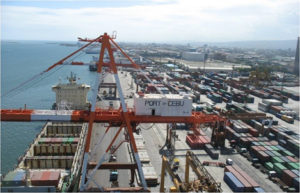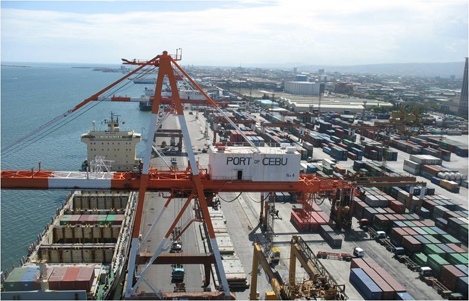 The Cebu Port Authority (CPA) is extending the length of Cebu International Port’s (CIP) berth to accommodate bigger and more international vessels.
The Cebu Port Authority (CPA) is extending the length of Cebu International Port’s (CIP) berth to accommodate bigger and more international vessels.
The 178 meters of berth being used at present by domestic shipping lines will soon be added to the current 512 meters of berth catering to foreign carriers, chief legal officer Atty. Annabel Pulvera-Page of CIP cargo-handling operator Oriental Ports and Allied Services Corp. (OPASCOR) said recently.
With the berth extension, CIP will be able to handle two foreign vessels at the same time, something the port operator hopes will attract bigger vessels, Page said in a presentation during the recent United Portusers Confederation Logistics Summit.
Domestic shipping lines, meanwhile, will be provided with their own apron with a crane.
Another major project is the reconfiguration of the container yard to add capacity to the port.
Page said OPASCOR will merge its offices into one building and move other structures and offices that need not be inside the yard to open more yard space. Once the plan is carried out in the middle of next year, Page said the port’s cargo stack capacity will increase by 20% to 25%.
These projects are among measures planned by CPA and OPASCOR to maintain healthy utilization and continuously increase port capacity at the Cebu gateway.
In 2014 and 2015, CIP experienced berth and yard congestion brought on by the growing number of cargoes and other external factors. After implementing measures, Page said, CIP is now free of congestion, and since January 2017, the terminal has been averaging around 42.64% in yard utilization.
CIP is currently servicing 28 containers per crane per hour, higher than CPA’s requirement of 25 boxes per crane per hour, which is an industry standard.
Container dwell time has also gone down to an average of seven days from the average 16 days in 2015.
Container volume increased 10% to 343,423 twenty-foot equivalent units (TEUs) in 2016 from 312,286 TEUs in 2015.
Page said their target this year is to see an 8% increase in container volume, based on steadily growing cargo volume and the high demand for construction materials in Cebu.
Aside from infrastructure development, OPASCOR is investing in equipment. Last May, a new quay crane arrived and was commissioned in June, bringing to five the total number of quay cranes at CIP, now supported by 18 gantry cranes.
OPASCOR is also re-fleeting its prime movers and trailers to maintain the terminal’s productivity and efficiency.
In addition, it will install additional reefer plugs and more closed-circuit television cameras, and investing in improving its terminal operating system called OPTOS.– Roumina Pablo





